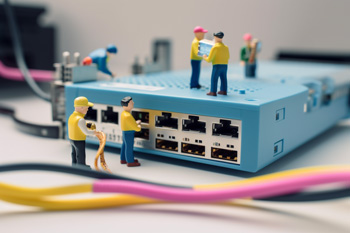A Tough Call Amid a Dicey Economic Situation
Recent trends suggest a significant shift in consumer behaviour. As mortgage rates climb along with a surge in household bills, Briton homeowners are increasingly leaning towards improving their current homes rather than moving to new ones. Big players in the home improvement industry, like Kingfisher, the owner of B&Q and Screwfix, are making the most of this situation.
Understanding the Evolution in Consumer Choices
The essence of a home often lies in its suitability to one’s needs. Historically, if a home ceased to be a perfect fit, the options were clear-cut: either adapt it to fit or find a new one. Yet, in the recent half-year, a notable deviation from this norm has emerged. Data from Kingfisher’s UK and Irish sectors provide tangible evidence of this, with a remarkable 1.7% surge in sales. This uptick signifies more than mere numbers; it’s a testament to Britons’ growing inclination to nestle in and beautify their existing homes.
Delving deeper into the types of purchases made offers further insight. There’s been a pronounced demand for insulation materials, underscored by B&Q’s impressive 11% sales increase in this segment. As colder months inch closer, and with them the promise of steeper heating charges, many homeowners deduce that bolstering insulation could counteract these impending costs. However, the consumer journey isn’t solely rooted in practicality. There’s a blossoming trend towards aesthetic enhancements too. Homeowners, now more than ever, are channeling their aspirations into crafting more visually pleasing living spaces. This is evident in the booming interest in bathroom makeovers and garden transformations, both of which are bolstering the home improvement industry’s revenue streams.
The Impact of the home improvement surge on the Property Market
The ripple effect of the home improvement surge on the property market is undeniable. With homeowners opting to refurbish rather than resettle, property sales are experiencing a slowdown. This trend prompts broader speculation. What might this mean for the dynamism of the housing market in the long run? With fewer homes changing hands, will we witness a stagnation in house prices? Or, more dramatically, could there be a potential downward spiral in property values?
The sustainability of this trend also warrants scrutiny. Is this shift a steadfast evolution in homeowner behavior? Or is it merely a fleeting reaction, borne from current economic pressures and uncertainties?
Though the future remains uncertain and answers elusive, one fact stands out starkly: the property landscape is undergoing a transformative phase. Stakeholders, from real estate agents to prospective buyers, must recalibrate their strategies in this shifting terrain.
Boom Times for Home Improvement Retailers
The rising penchant for home renovations is proving fruitful for home improvement retailers. B&Q stands as a testament to this uptick, witnessing significant sales growth, as do other similar chains. They’re reaping the benefits as homeowners redirect their finances towards enhancements rather than new acquisitions.
Furthermore, this surge isn’t merely a temporary spike. With consistent growth in demand, the home improvement sector is bustling with activity. As homeowners opt for both functionality and aesthetic upgrades, stores offer a plethora of products to cater to diverse needs.
For businesses within this sector, the prevailing circumstances signal an era of opportunity. With homeowners investing more in their existing spaces, retailers have the chance to innovate, expand, and solidify their market position.
The Evolution of Home Ownership Trends
The current economic climate, underscored by rising mortgage rates and heftier household expenses, has steered Britons to rethink their approach towards their homes. Instead of pursuing new properties, there’s a marked shift towards refining and enhancing their existing residences. This approach doesn’t just reflect financial prudence but is also indicative of a deeper, evolving relationship with ‘home’ in a dynamic economy.
It’s crucial to discern if this shift is merely a reactive strategy to external economic pressures or if it marks the beginning of a longstanding trend in home ownership. The implications are far-reaching, touching every facet of the property and home improvement industries. With homeowners focusing on renovation, there’s an evident boost in the home improvement sector.
But what does this mean for the property market? With fewer individuals seeking new properties, there might be longer-term repercussions on property valuation, transaction speeds, and the overall dynamism of the property market. There’s a broader narrative unfolding here – one that potentially heralds a transformative phase for the industry, demanding adaptability and foresight from all its stakeholders.
Original Article:https://www.theguardian.com/business/2023/sep/19/consumer-spending-on-home-improvements-gives-kingfisher-sales-lift











